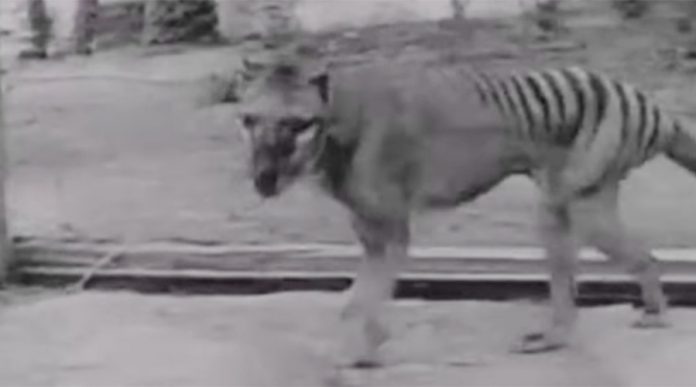A major scientific search is underway in Queensland, Australia for the Tasmanian tiger, thought extinct for over 80 years. A series of possible ‘plausible’ sightings have triggered hope a rare species has returned from the brink.
The effort, spearheaded by two researchers from James Cook University, comes on the heels of credible eyewitness observations of animals in the region matching the long-extinct species’ description.
“We have cross-checked the descriptions we received of eyeshine colour, body size and shape, animal behavior, and other attributes, and these are inconsistent with known attributes of other large-bodied species in north Queensland such as dingoes, wild dogs or feral pigs,” Professor Bill Laurance said in a university news release.
The Tasmanian tiger, or thylacine, is the largest known carnivorous marsupial of modern times. It was once widespread throughout the wetlands, forests, and grasslands of Australia, Tasmania and Papua New Guinea. Pressures from competing species like the invasive dingo, as well as a devastating cull to protect sheep by European settlers in the 19th century led to the population’s collapse and subsequent extinction in 1936.
Over the ensuing decades, thousands of unsubstantiated reports have been filed from people claiming to have spotted a Tasmanian tiger. Legends of pockets of thylacine surviving in remote regions of Tasmania and Australia were so pervasive that rewards ranging from $100,000 to as much as $1.75 million were offered for the capture of a live animal.
So what is it about these two eyewitness reports from the Cape York Peninsula that have renewed scientific interest in the species? According to Laurance, who has spoken at length to both individuals, it’s both their credibility and what they saw that’s most intriguing.
“One of those observers was a long-time employee of the Queensland National Parks Service, and the other was a frequent camper and outdoorsman in north Queensland,” he said. “All observations of putative thylacines to date have been at night, and in one case four animals were observed at close range — about 20 feet away — with a spotlight.”
The researchers, who plan to deploy 50 high-tech camera traps throughout the Cape, are keeping the locations of the sightings and upcoming survey a closely guarded secret. Regardless of whether or not any Tasmanian tigers are discovered, the search is expected to collect valuable information on local species.
“It is a low possibility that we’ll find thylacines,” co-investigator Dr. Sandra Abell told 9News, “but we’ll certainly get lots of data on the predators in the area and that will help our studies in general.”















